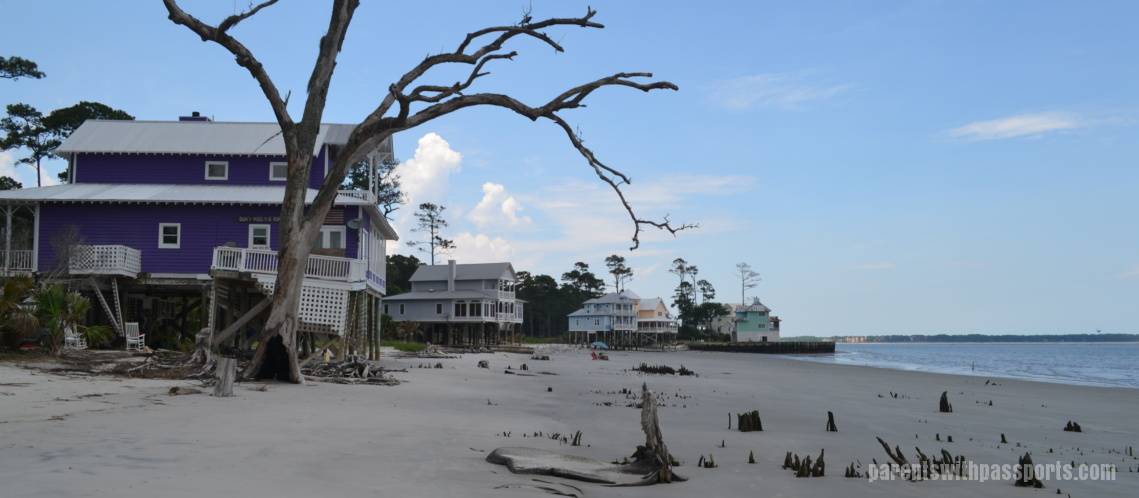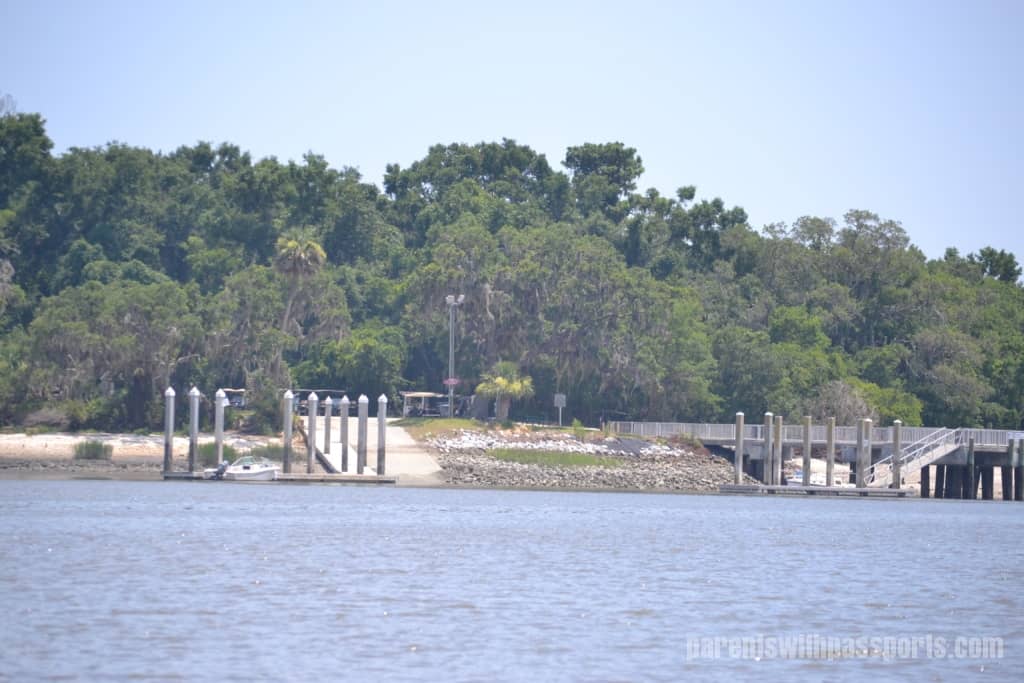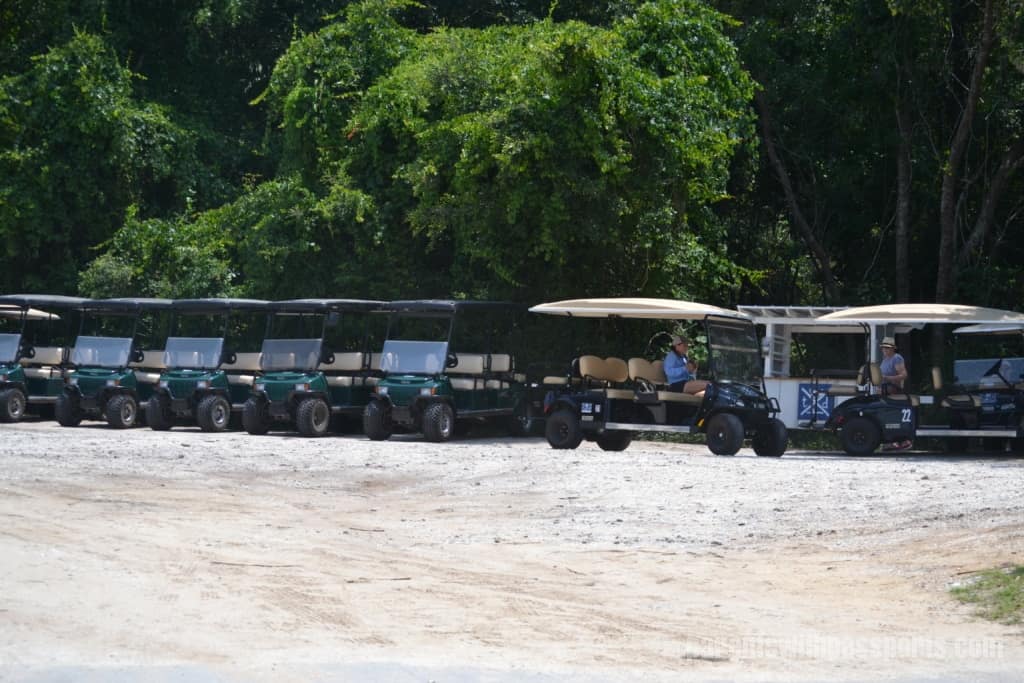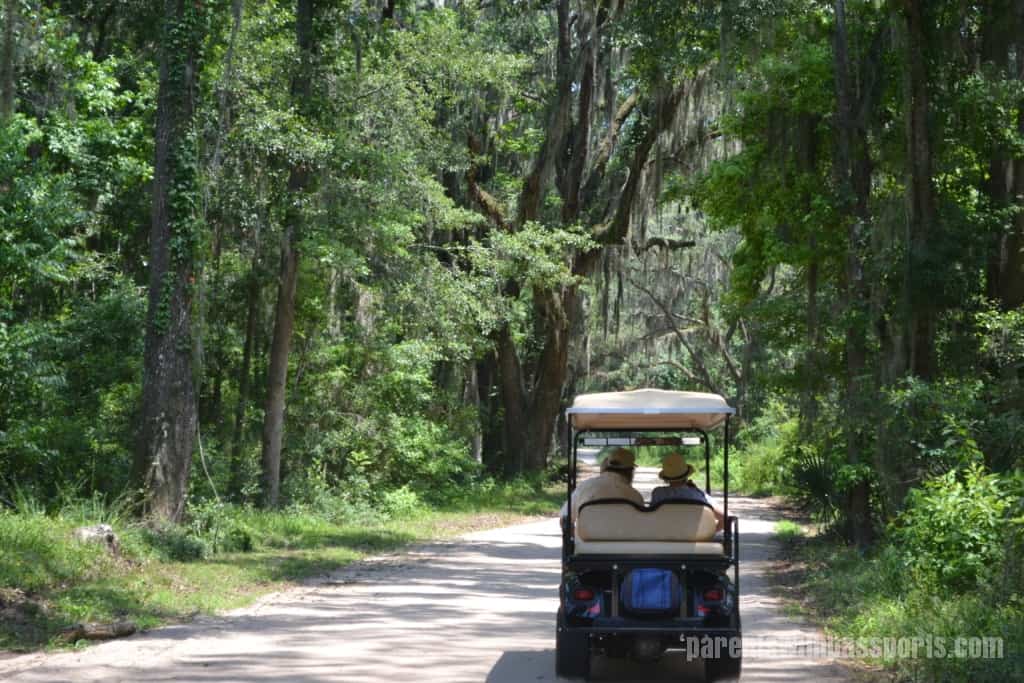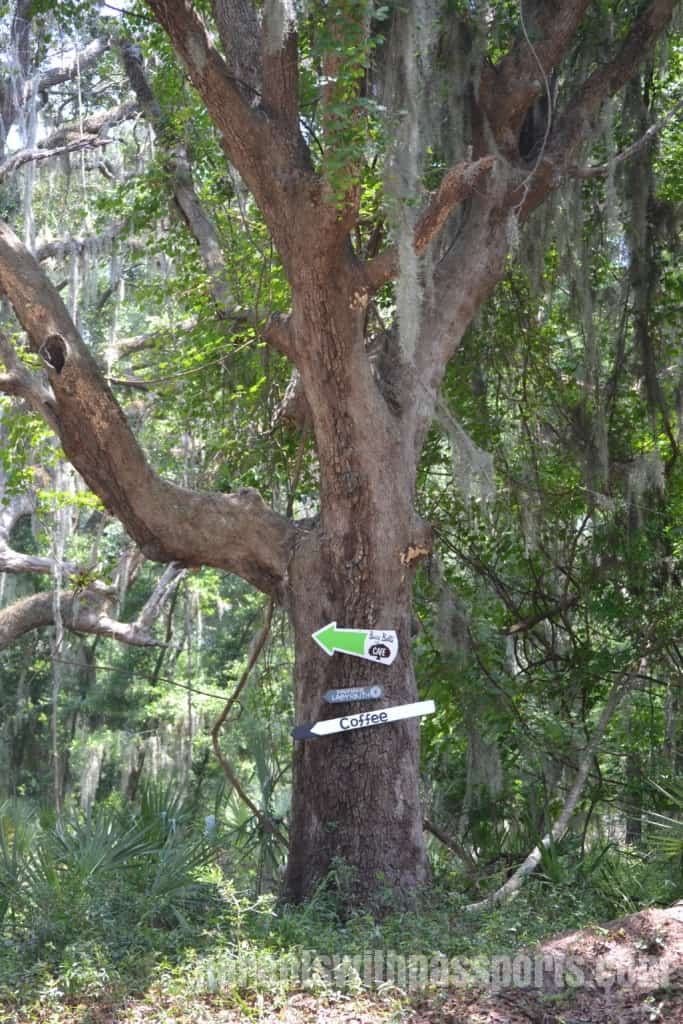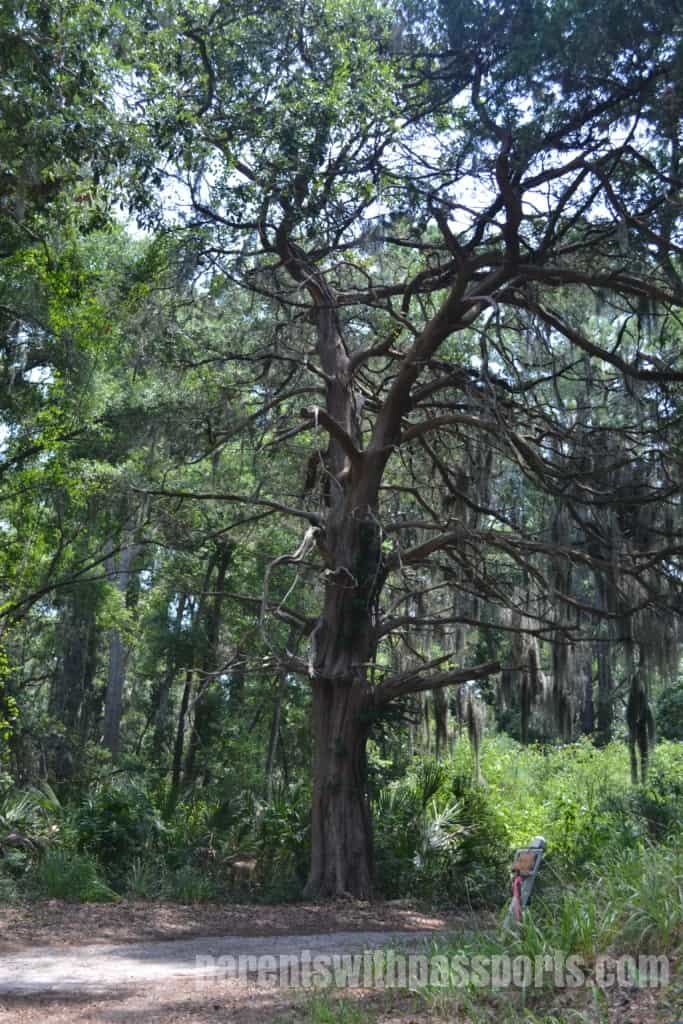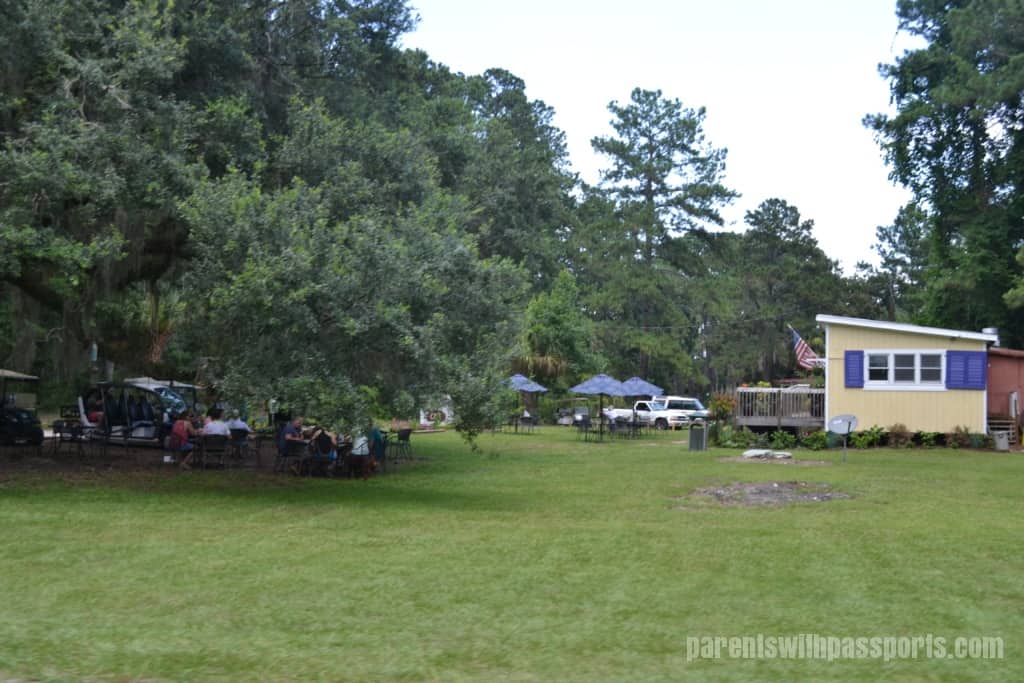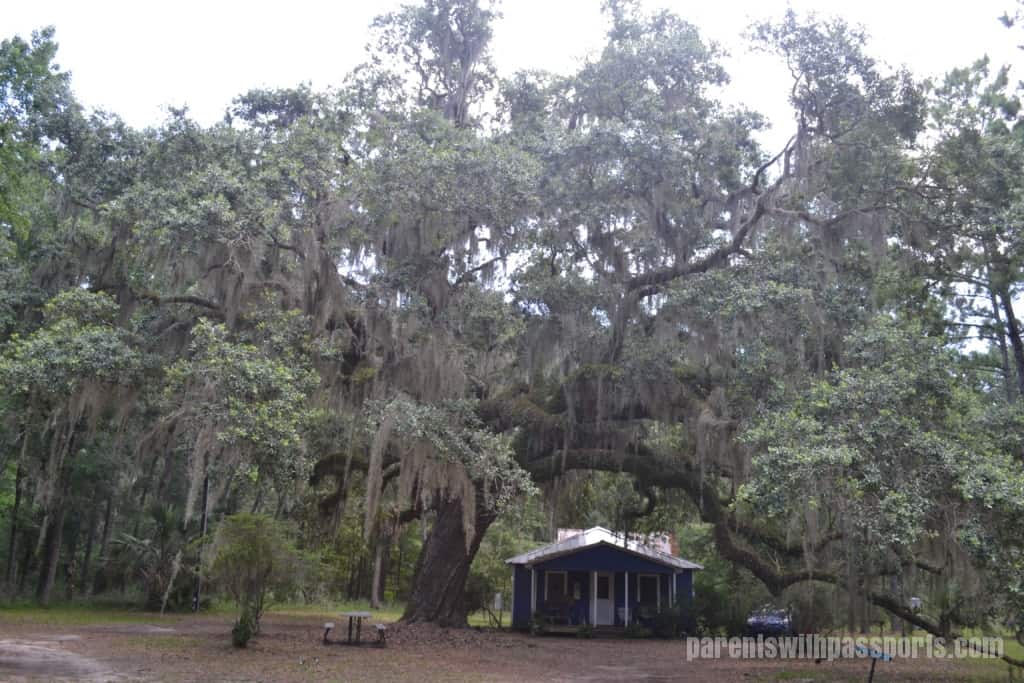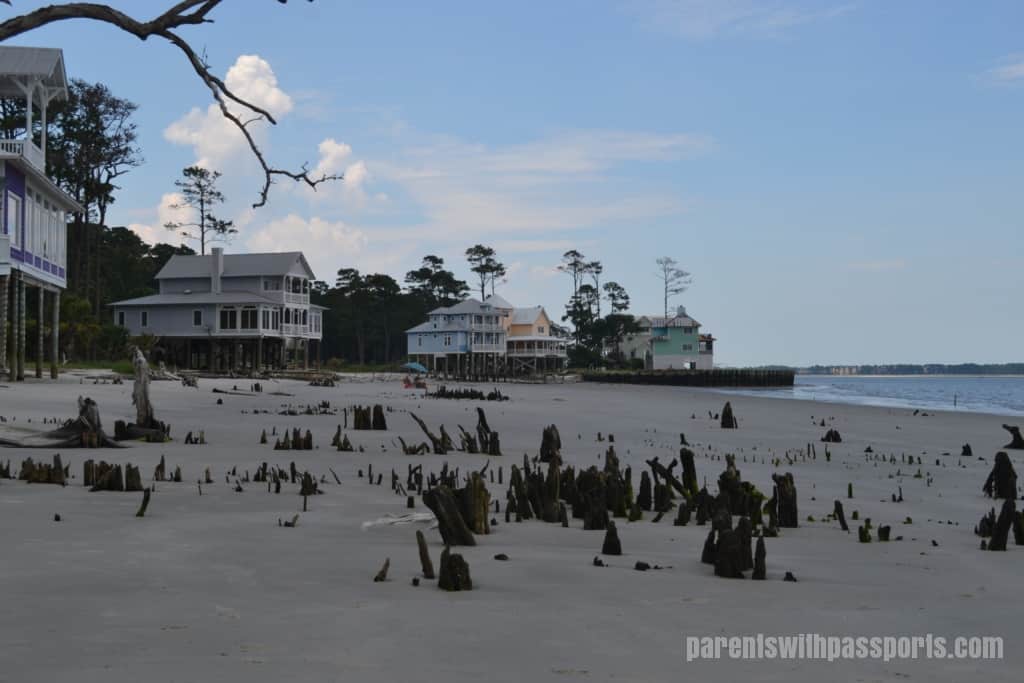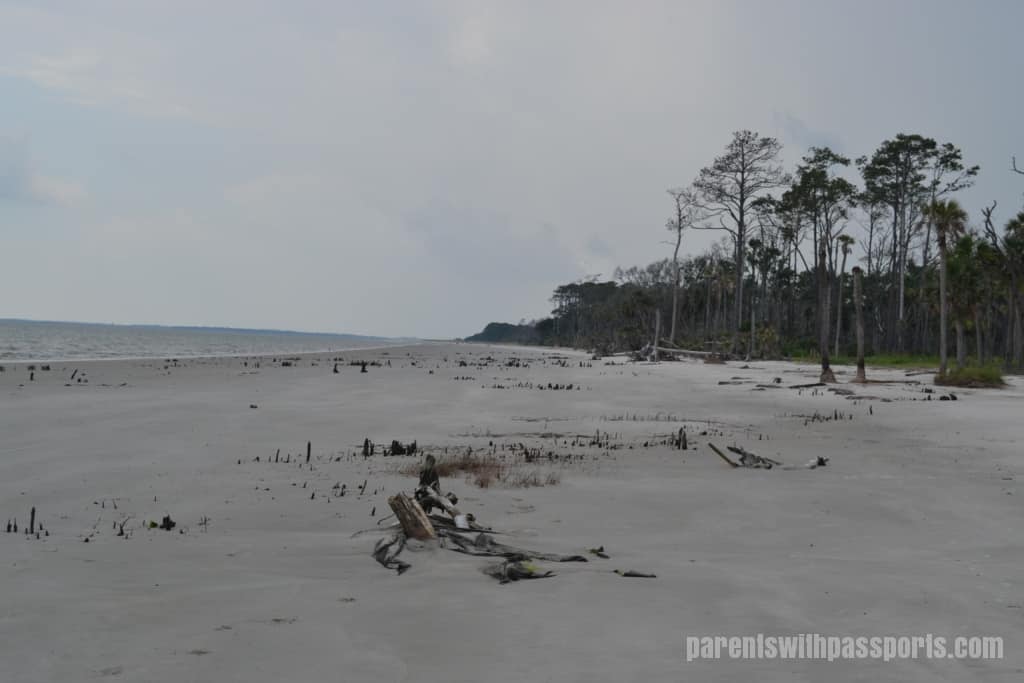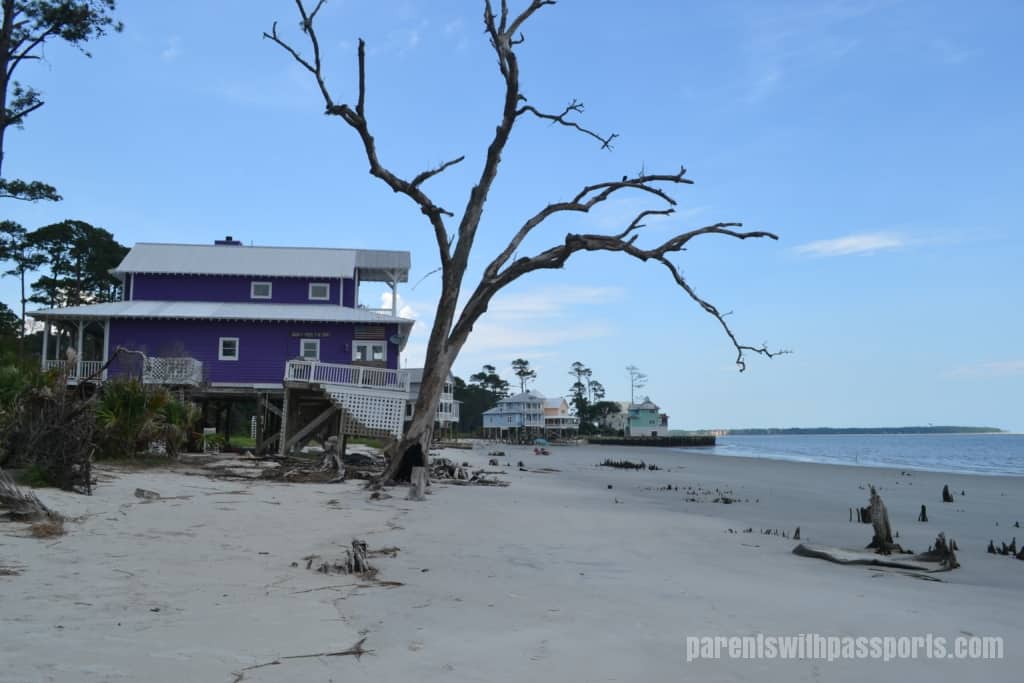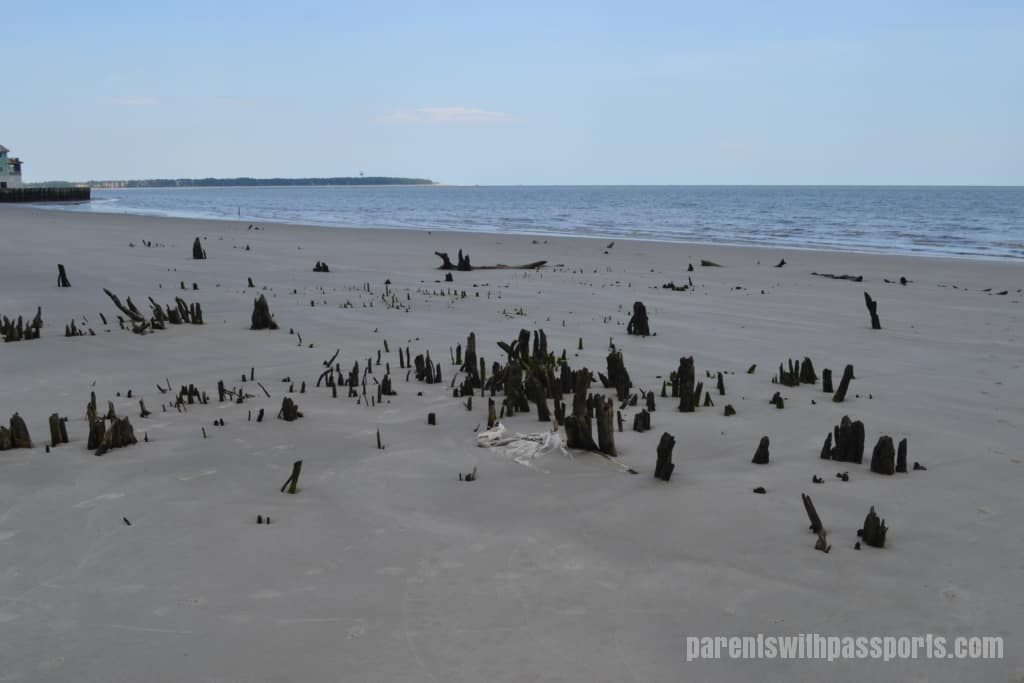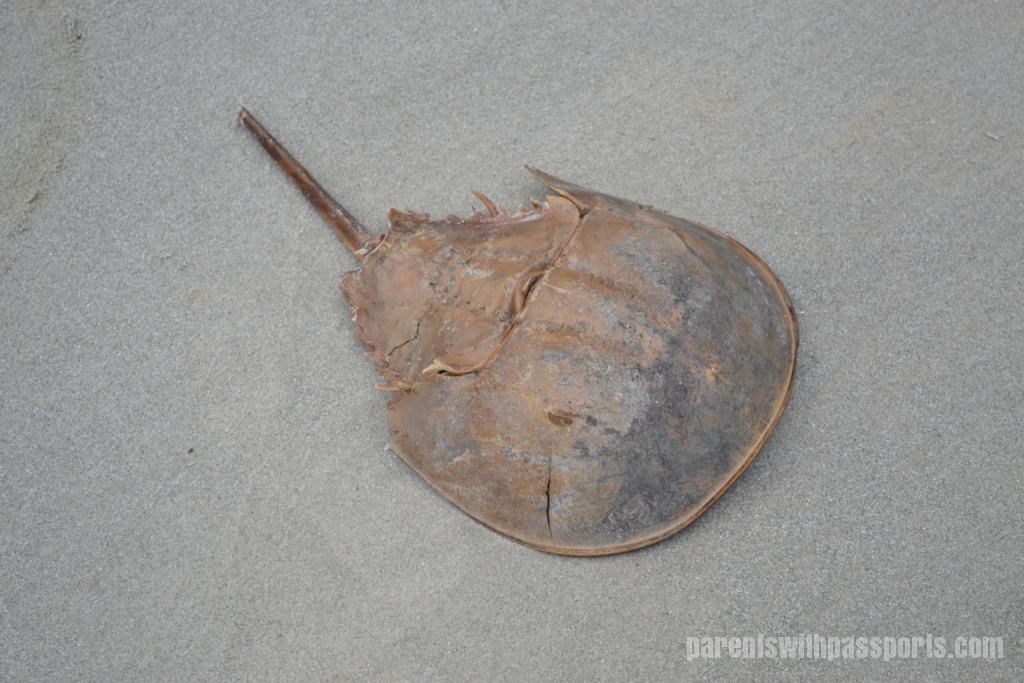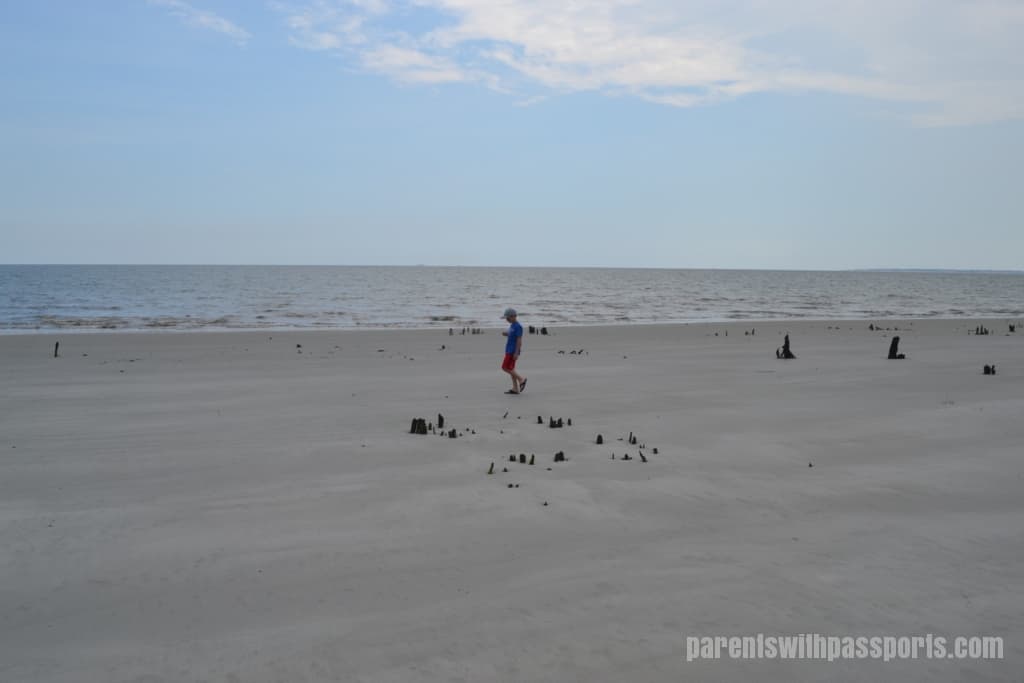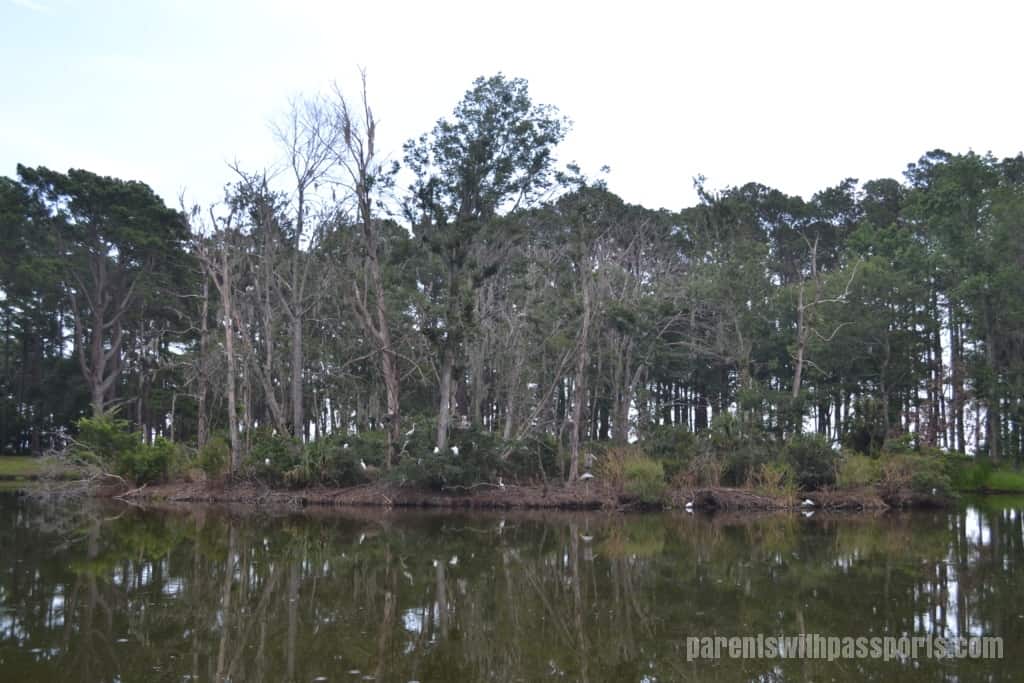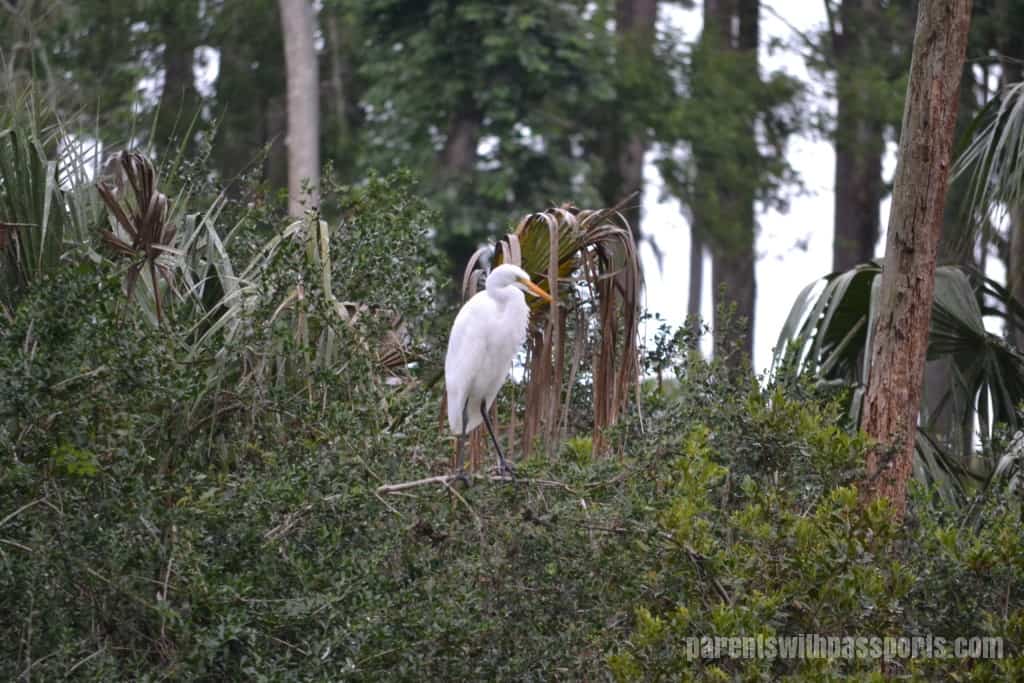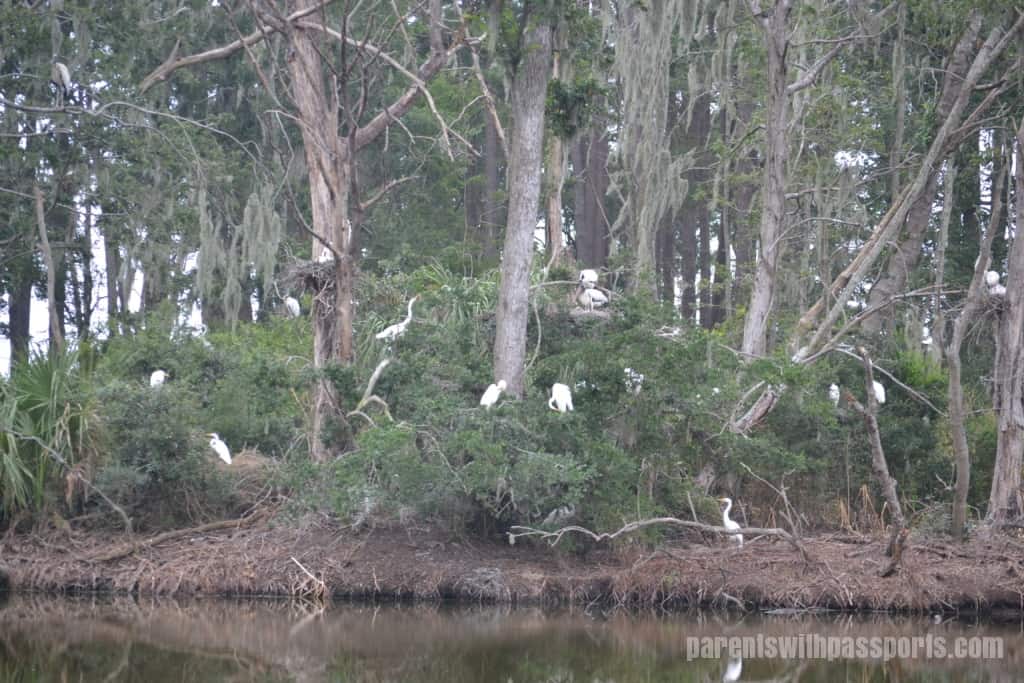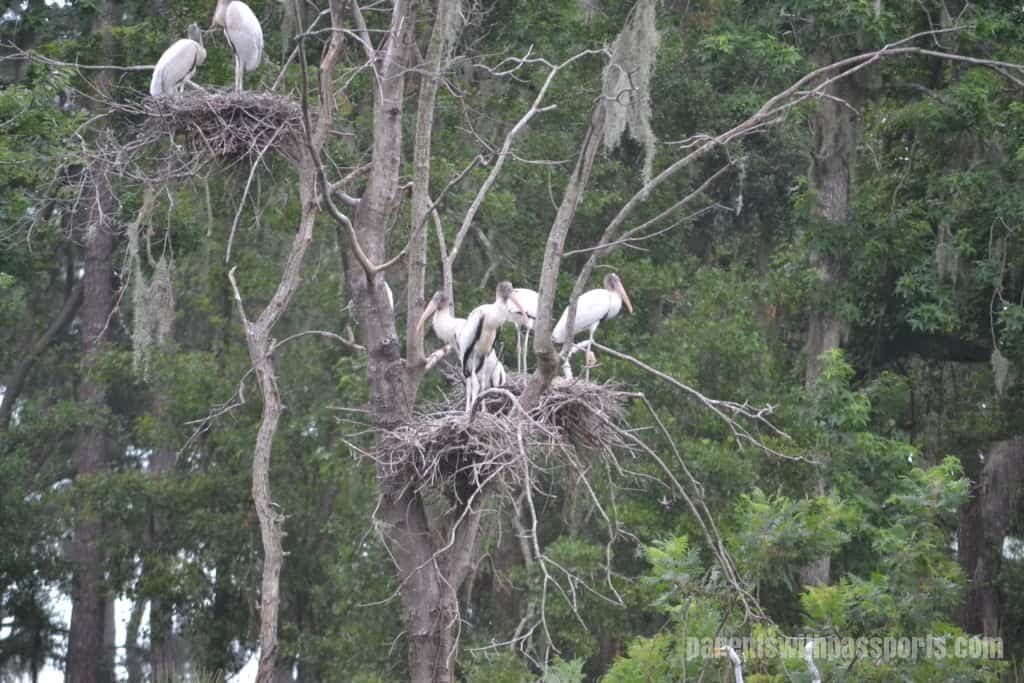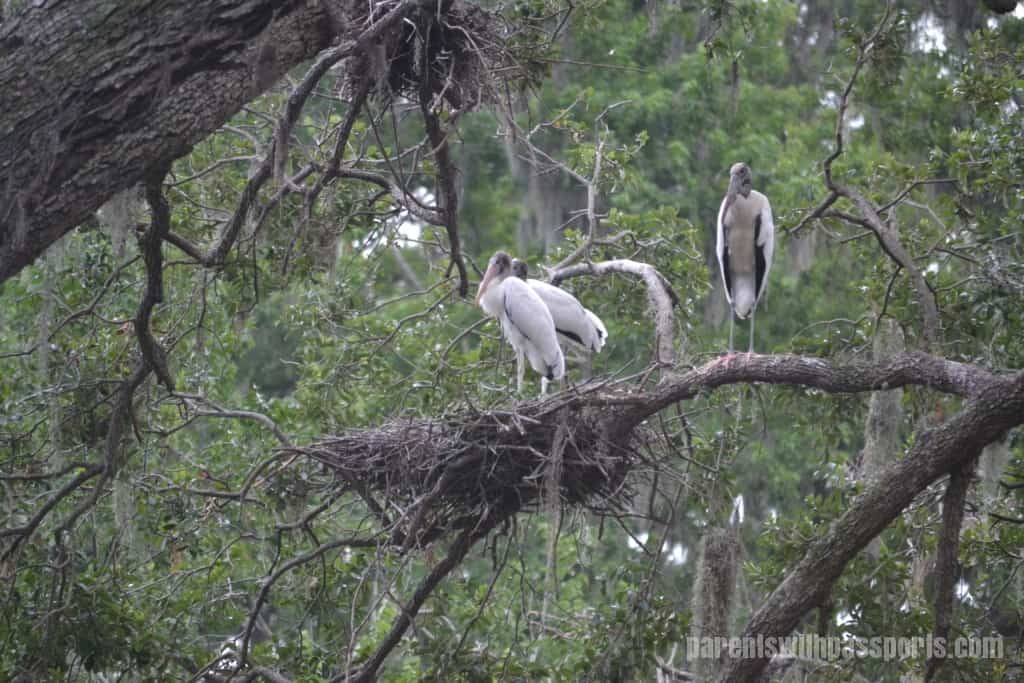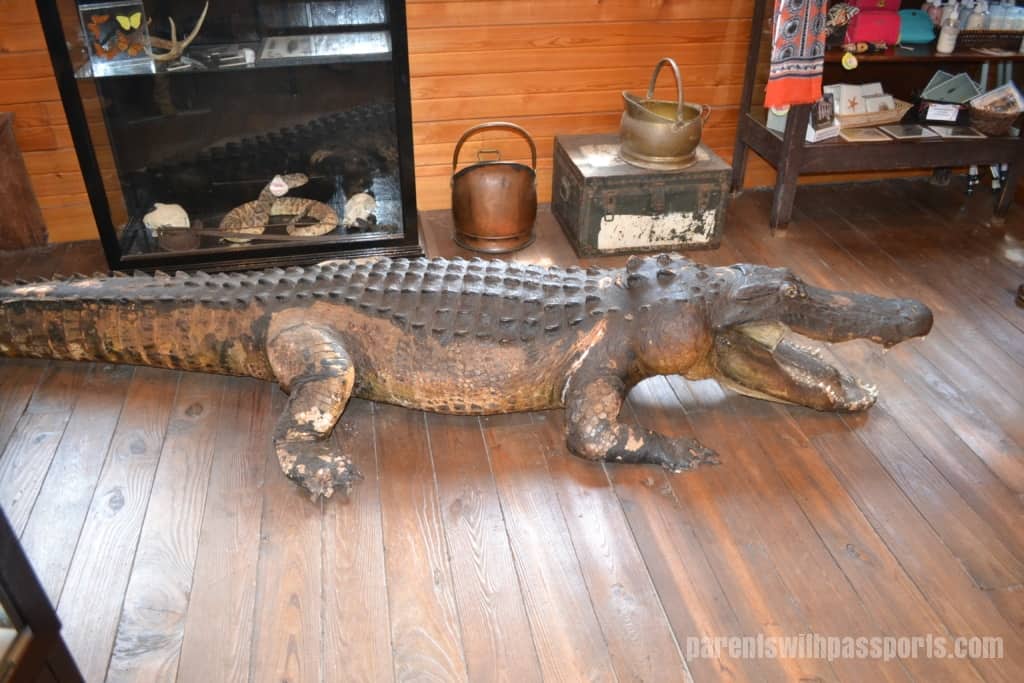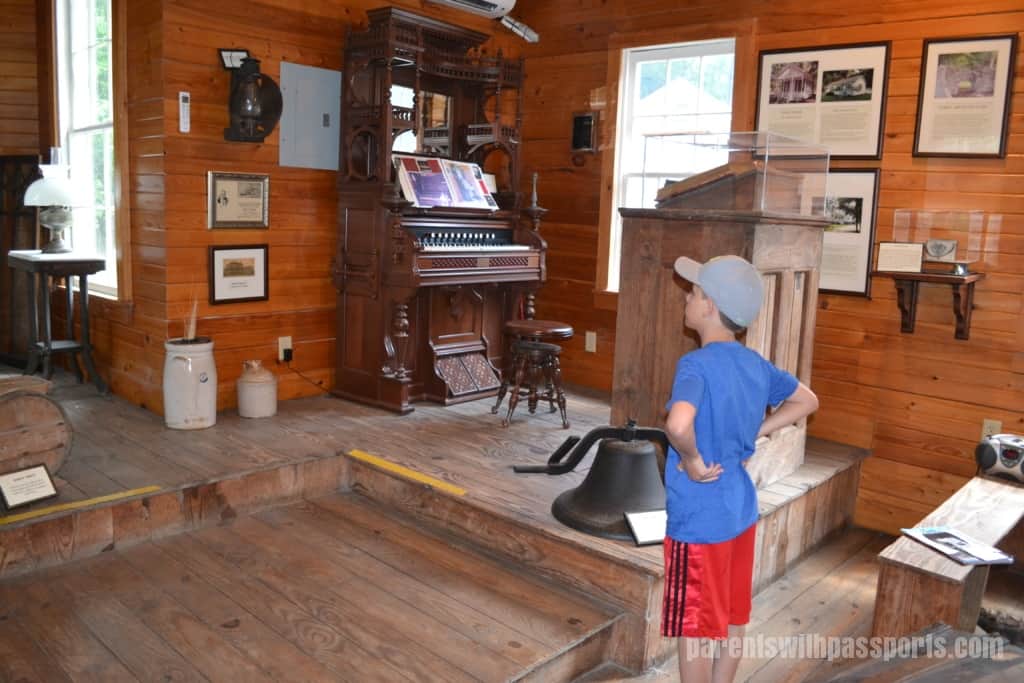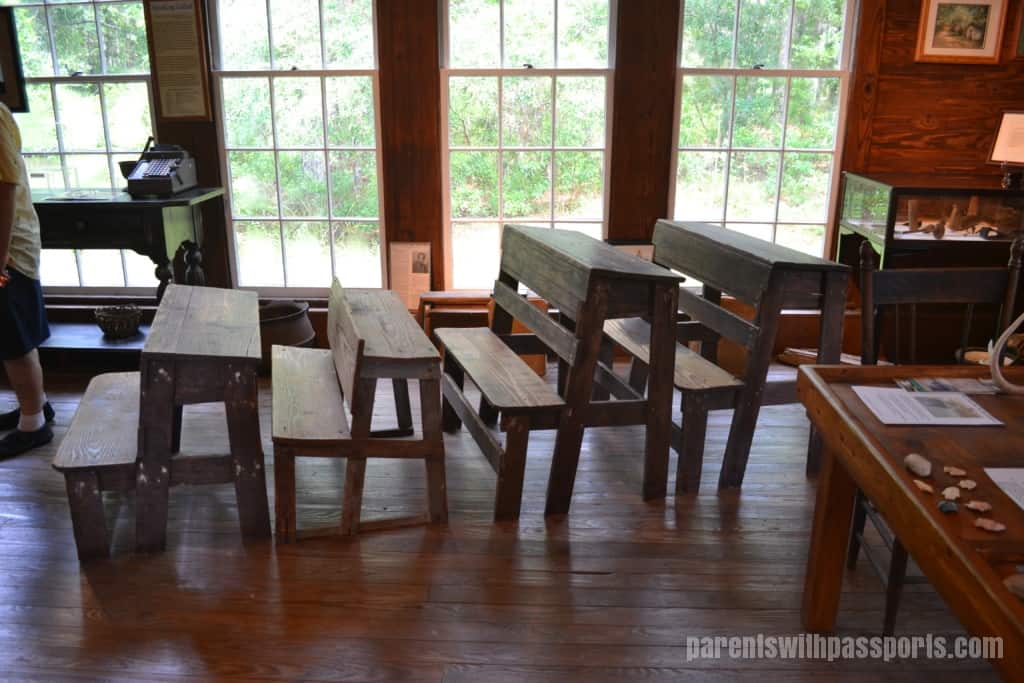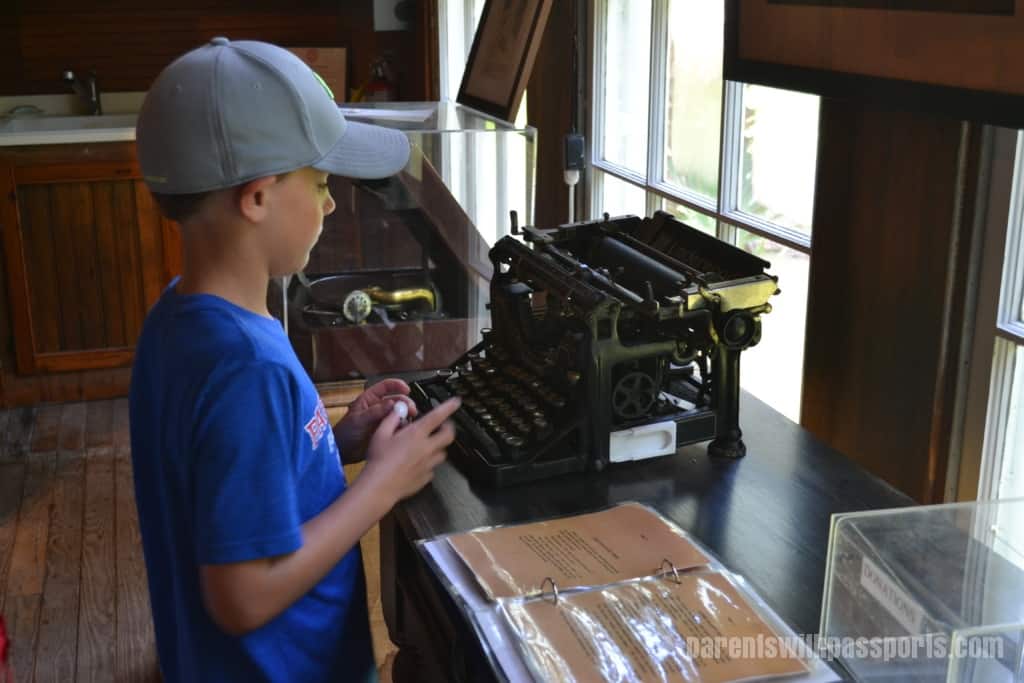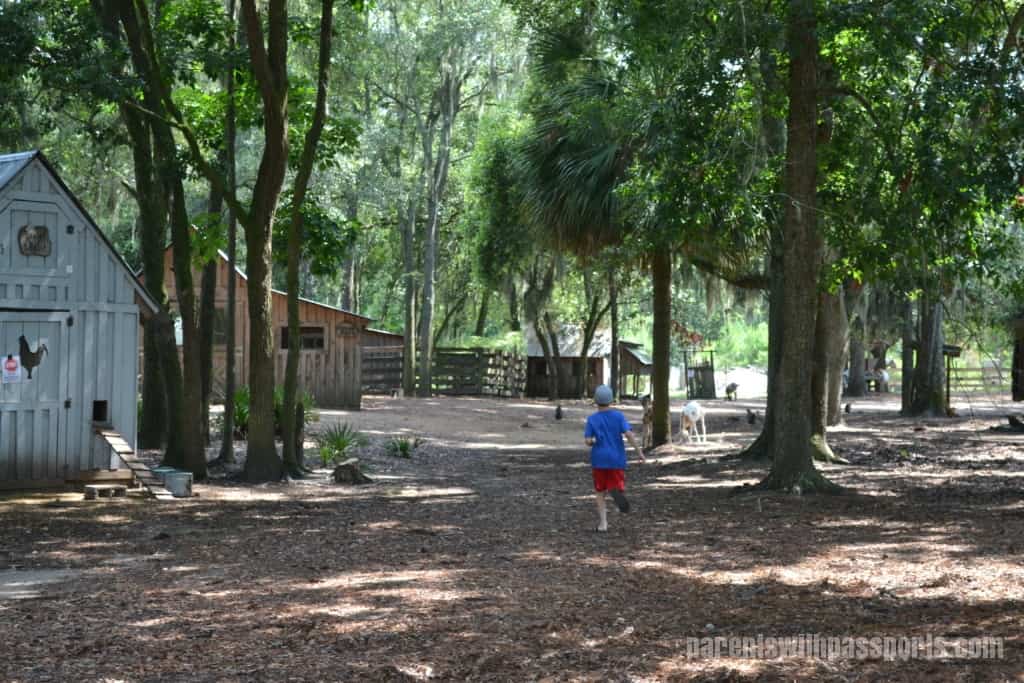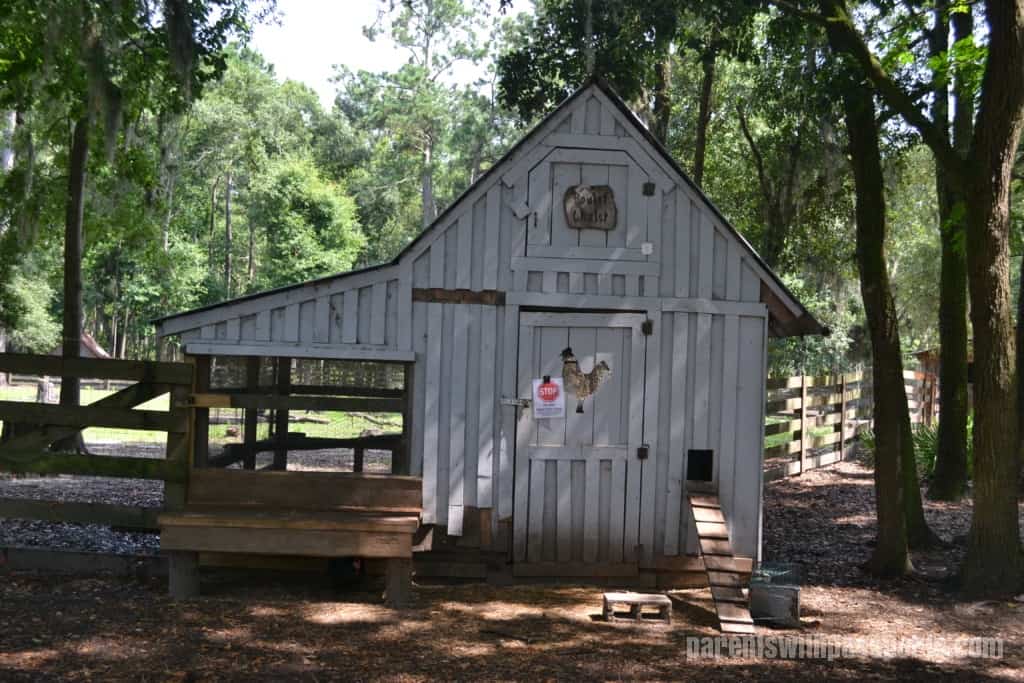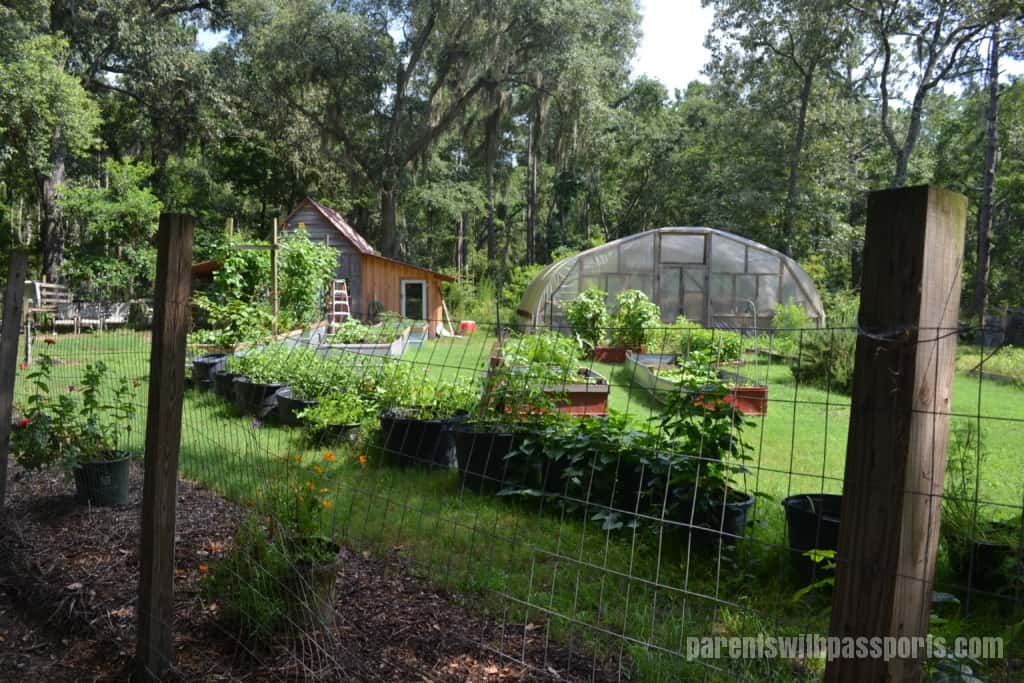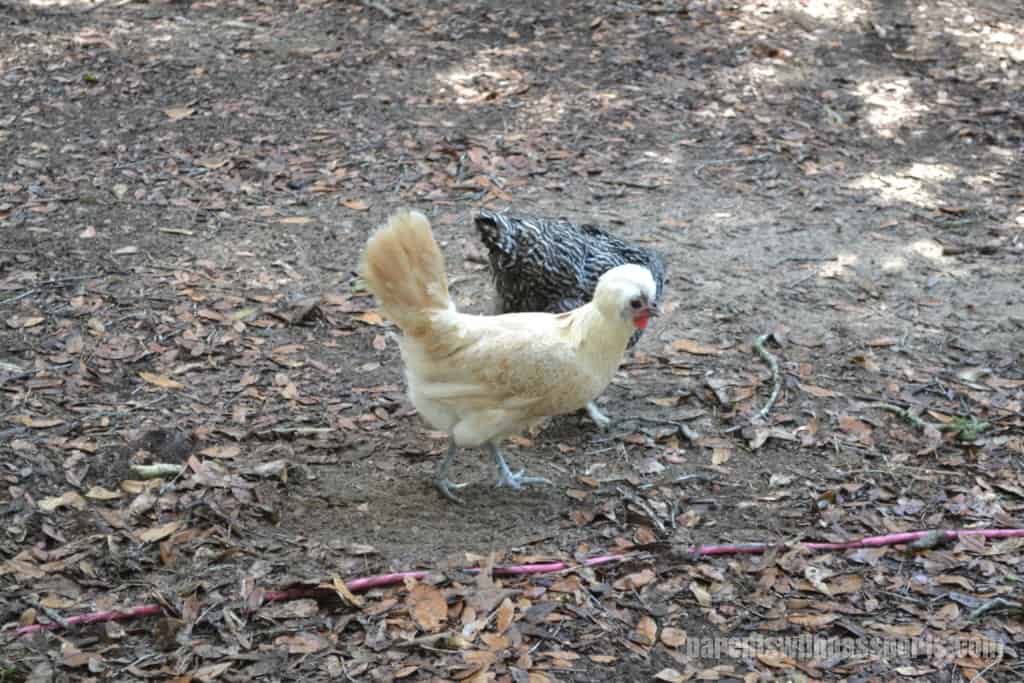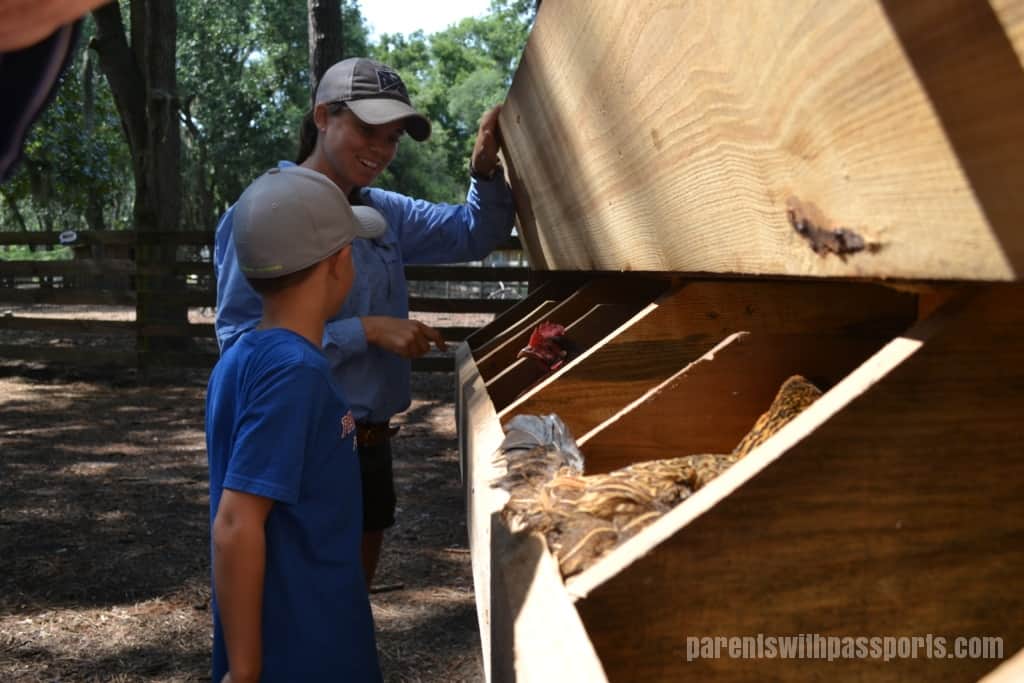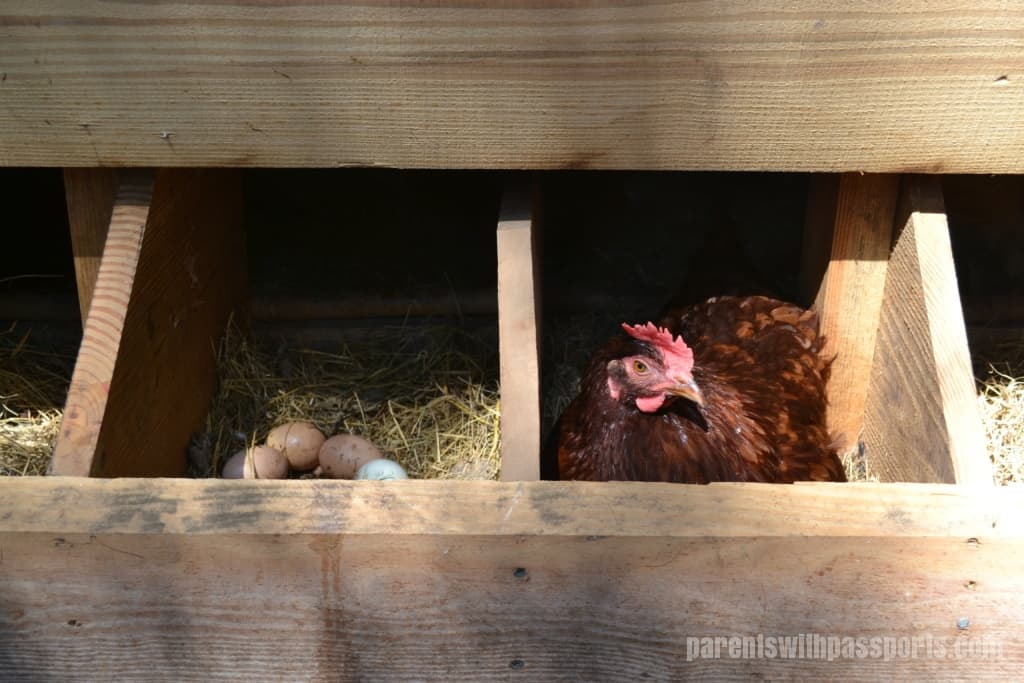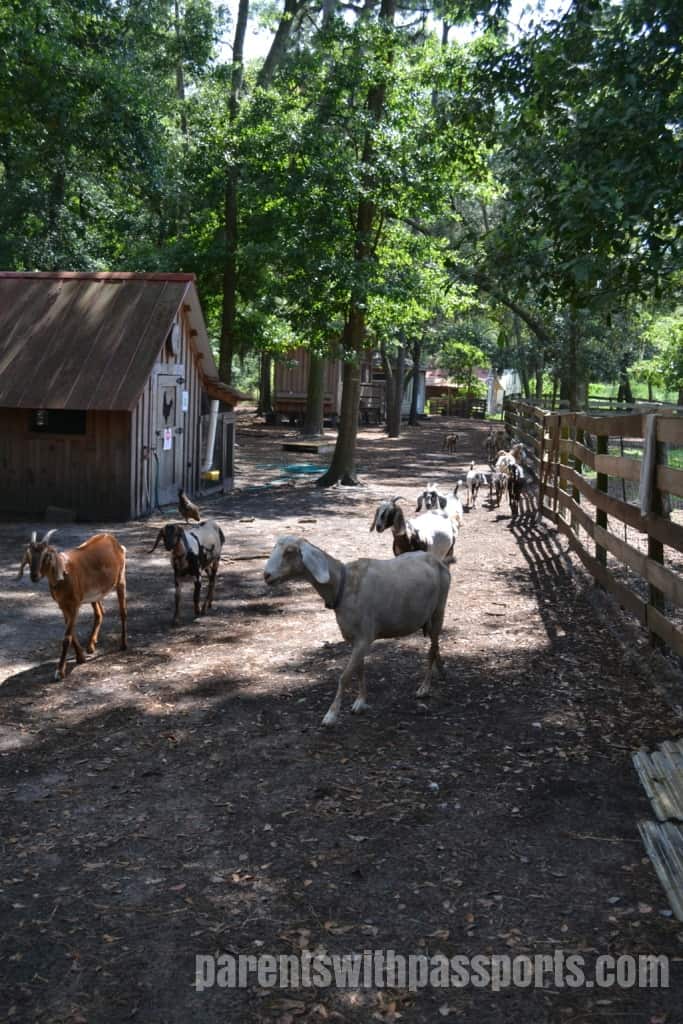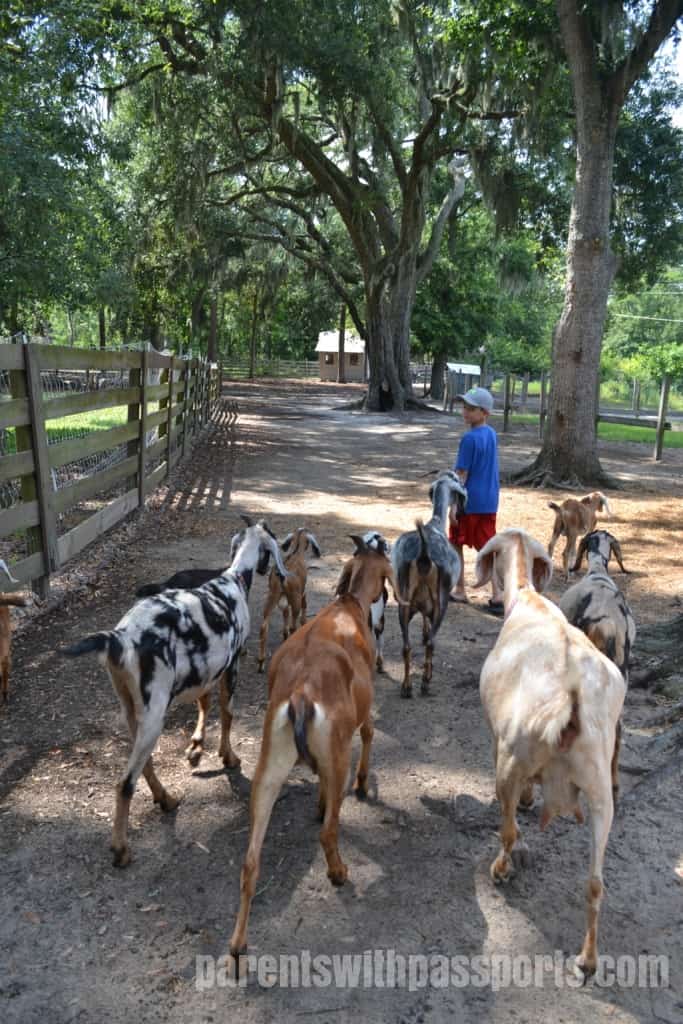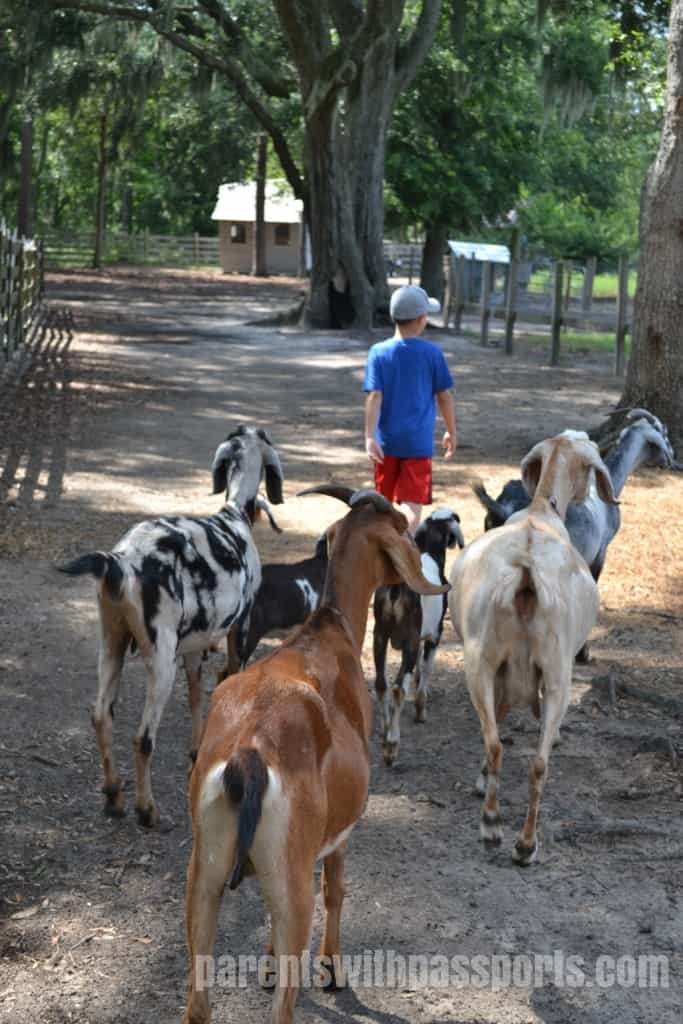Visible from Harbour Town, Daufuskie Island sits across the Calibogue Sound from Hilton Head. It is an island with a fascinating history and an equally fascinating present. With no bridge connecting it to the mainland, it is a place where time has seemingly stood still. Golf carts and bicycles are the main mode of transportation. There is no hospital, no police, no grocery store. The small country store has a sign in the front window stating “If we don’t have it, you don’t need it!” Life is simple here by choice and its roughly 400 residents love it that way.
My family visited Daufuskie Island about 15 years ago. I’ll admit that my memory of that visit has become hazy with time – we stayed on the island and I remember us arriving just as it was getting dark and getting lost in our golf carts. It was a fun adventure, riding around in the pitch black on nameless dirt roads, trying to find our condo while my grandmother admonished us that it was past her bedtime. My impression as a late 20-something was that it was empty, isolated, and a had weird mix of a few luxury developments on an otherwise poor and undeveloped island. But the island seemed on the cusp of a boom – with such beautiful beaches and the promise of a secluded get-away, it seemed certain that development would continue.
When I read an article recently about South Carolina’s oldest winery (dating back to 1883) reopening for business on none other than Daufuskie Island, I was immediately intrigued to see how – or if – the island had changed at all in the 15 years since I’d been there. With our annual Hilton Head trip coming up, I started researching a visit to the island. I was more disappointed than surprised to find that the island has been struggling. Melrose Resort, one of the two major resorts on the island, filed for bankruptcy in 2017, its second time in 7 years. Its golf course, designed by Jack Nicklaus, is abandoned and overgrown, as is the Bloody Point Golf Club. Of the three golf courses and communities on the island, only Haig Point remains viable (and is, in fact, prospering).
But my research showed some life in the island yet. A few new businesses are making a go of it on the island and a Hilton Head developer has his eye on a new project on the island. We decided to go check it out for ourselves. There are a few companies that run tours from Hilton Head but we decided to go with the on-island company, Tour Daufuskie.
Tour Daufuskie offers 4 different tours: Sallie Ann’s Native Gullah Tour, Wild Daufuskie Eco-Tour, Daufuskie Island History and Artisans Tour, and a guided kayak tour. In addition to the tours, they offer golf cart rentals for self-exploration of the island, as well as kayak and paddleboard rentals.
We thought that the eco-tour would be the most interesting for the kids, while the adults were happy just to get to see some of the island again. Unfortunately, prices are quite high once the ferry ride is factored in. For the eco-tour, the tour itself costs $45 ($35 for children) and then the ferry ride is another $45. Ouch. That’s an expensive day out for a family of four. At one time we were considering a total of 10 people from my extended family going on the tour but given the price we reassessed and determined that my parents, my youngest son JB, and I were the only ones with a strong enough interest in going to justify the cost. So I booked tickets for the four of us.
For $10 more, you can opt for a water taxi ride from Bluffton instead of the ferry from Hilton Head. We thought this would enhance our experience and since we were down to only 4 people, we decided to use May River Water Taxi. We were really happy with our decision. (Read all about our experience here!) The water taxi took us right to the public boat landing, and Tour Daufuskie’s golf carts and guide were there waiting.
We met our tour guide Anna, who lives on the island, and the one other couple who was booked on the tour. Since the golf carts fit six people, we split into two groups – my dad drove our cart and Anna drove the cart with the other couple. JB was super excited to sit in the rear facing seat so he hopped in the way back by himself even though there were only four of us in the cart. My dad was worried about him riding back there. After the third time asking him if he was ok, JB said “You don’t have to worry about me Papa. I’m having the time of my life back here!”
We headed out to tour “wild” Daufuskie. The surroundings on the island are beautiful and peaceful. Hundred year old trees lined our way, Spanish moss dangling from their branches. The roads are dirt and the “street signs” are handmade wooden arrows hammered into trees.
Anna stopped to point out some interesting plants along the way. We learned about sassafras trees and how their use has been banned because its oil is used in the production of the illegal drug MDMA (ecstasy). She also pointed out sweet grass and other native plants and we even spotted a fox squirrel scurrying around in the brush. The lush landscape was a beautiful backdrop for our drive around the island.
We passed a few residences, a church, one of the two restaurants on the island, and an historic Gullah home. (Following the Civil War, the island was inhabited by a large number of freed slaves. The African Americans in the low country were known as Gullah, and their culture and language has been well preserved on Daufuskie Island.)
We headed to the beach next, stopping at the public beach between Bloody Point and Melrose. To our left was a series of brightly painted houses on stilts known as the Driftwood Cabins (part of the Melrose on the Beach plantation). To our right was nothing but beach and forest to the end of the point.
In both directions, it was evident that beach erosion is a big problem on Daufuskie. Some of the houses, which look like Easter eggs painted in their bright pastel colors, have been condemned – some due to neglect but many due to beach erosion. As the sand has washed away from underneath them, the stilted homes have become unstable. And everywhere on the beach there are rotting tree stumps poking through the sand, evidence of a forest that once stood there but has been overtaken by the retreating beach.
We wandered around the beach for a while, searching for crabs in the grasses and under logs. We found an empty horseshoe crab shell and JB scoured the beach for shells and crab exoskeletons. Two lone people sat on the far end of the beach under an umbrella. The deserted beach covered with dead tree stumps seemed almost eerie, a feeling compounded by the storm that started rolling in.
Next we headed to the rookery. Anna had mentioned it several times already and I knew vaguely that it was a bird nesting site, but I was not prepared for the scale of the birds or their nests. The rookery consists of two small islands in a lagoon near the (abandoned) hotel at Melrose Resort. The islands are a nesting spot for endangered wood storks, as well as other birds such as egrets, herons, and cormorants.
The sheer number of birds was stunning. It was hard to believe that so many birds could crowd onto the tiny islands. Anna mentioned that there were alligators in the lagoon surrounding the island. (We didn’t see any, which was both a disappointment and a relief at the same time.) She said that one year they removed the alligators from the lagoon for safety reasons and the birds did not come nest. Without alligators in the surrounding waters, the birds’ nests were not protected from raccoons that could swim to the island and steal their eggs.
The wood stork nests were by far the most fascinating part of an already fascinating experience. Perched up high in the branches, these gigantic nests could fit up to 4 or 5 adults, each bird standing over 3 feet tall. They crowded the branches, with one nest built right next to another. It was so amazing to see birds and nests of that magnitude in such large numbers.
We could have watched the birds for a long time, but the sprinkling rain that started on our way over began to fall heavier. We got back in the golf carts to head to our next destination only to get caught in a downpour. Anna quickly changed courses and led us to the island’s small museum to take refuge and learn more about the history of the island. The Billie Burn Museum is housed in the old Mount Carmel Baptist Church building. The one-room museum has a neat collection of island artifacts dating back as far as pre-colonial days.
Across the way from the museum is the Jane Hamilton School, where children on the island were educated between 1940 and 1950. The building is now a library and Gullah Learning Center, and JB enjoyed seeing the old school desks and type writers and learning about island education some 75 years ago.
The rain had passed by the time we finished exploring the museums. Anna had gone to retrieve some towels and wiped down the golf carts before we headed to our last destination. To this point, we had thoroughly enjoyed our tour but didn’t feel like we had seen a ton of wildlife aside from the birds at the rookery. I have to admit that I had a little chuckle when I found out that our last stop would be the community farm. The farm would be interesting for sure but hardly a part of “Wild Daufuskie”.
And while it was true that the farm animals did not really fall into the “wildlife” category, it was such a worthwhile stop on the tour. It was by far JB’s favorite part of the tour and he still asks when we can go back again.
Founded by local resident Pat Beichler, the community farm is completely volunteer-operated. She leased the 8 acres of land for $1 in 2010 with the goal of providing local organic food to the island’s residents. A completely sustainable operation, the wood used from clearing the land was milled by hand into the farm’s 10 buildings. It is a community farm in the truest sense of the word. No products are sold. Everything is shared amongst the members who give their time and their labor to make the farm a reality.
Entering through the farm’s gate, we were first greeted by some chickens, including one with an unusual looking hairdo. We went to the chicken house and saw some hens hard at work laying eggs. We also visited the horses, pigs, geese and many other animals that make the farm their home.
But the greatest attraction of the farm for JB was the Nubian goats. The goats were everywhere. Their long floppy ears were adorable and JB made fast friends with them. He loved when Anna told him each of their names as they came up to greet him. JB loved to pet Zelda, Oreo, and the other cleverly named goats. And apparently they loved it too! When JB finally pulled himself away from the goats to check out another part of the farm, I turned around and saw a line of goats following him.
The goats then proceeded to follow him around the farm for the rest of our visit. Anna joked that she would have to send some back with him. He would have happily taken her up on the offer!
So despite being decidedly “unwild”, the stop at the community farm was definitely JB’s favorite. After prying him away from the goats (or maybe vice versa?), we took the golf carts back to the boat landing. Our boat from May River Excursions was pulling up as we arrived. We thanked Anna for a great tour and hopped on the boat, hoping to outrun an impending storm.
Overall I highly recommend Tour Daufuskie. Anna was a fabulous tour guide. She was extremely knowledgeable about the island, including its wildlife, plant life, and history. She was sweet and friendly and good with kids. We would love to return and do one of the other tours one day (hopefully they would include a stop at the farm too!). My only hesitation in recommending it for the entire family is the cost. Because you have to factor in transportation to the island, it is expensive for a family of four or more. I would still say it is worth going to Daufuskie at least once and taking a tour if you can swing it, but if your group is large or the tour is too costly, you can always rent golf carts from Tour Daufuskie and explore the island on your own.
